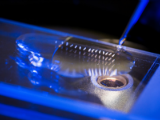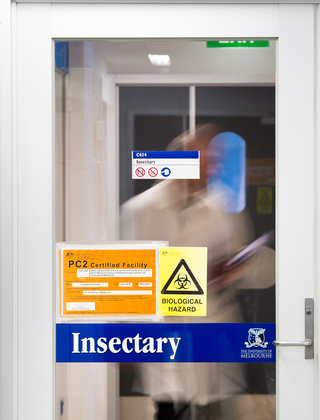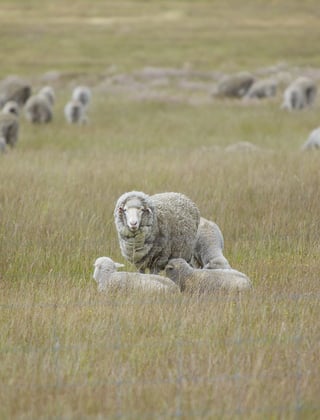Flystrike Management Practices

Welfare improved management practices to reduce the risk of flystrike.
AWI’s investment in welfare improved management practices to reduce the risk of flystrike includes research, development and extension into management practices.
Management practices are pivotal in reducing the risk of flystrike. These include methods of reducing the sheep’s attraction to flies through the strategic timing of crutching and shearing, controlling worms and dags or through the judicious use of chemical treatments to kill the blowfly maggots before they invade the sheep and cause flystrike.
AWI investment into R&D into flystrike management practices has included better management of current chemicals, the improved delivery of these chemicals and the development of new chemicals, ensuring that growers retain access to effective chemical treatments into the future to improve the lifetime welfare of all sheep.
Some of current or recently completed R&D projects in this area include nanotechnology, fly genome sequencing, an investigation into the development of a flystrike vaccine.
Nanotechnology

Nanotechnology offers a means of providing extended protection of sheep against flystrike and lice This project is designing and testing unique silica nanocapsule formulations with spikes on the particle surface and purpose-designed release characteristics to give prolonged periods of protection against flystrike and lice, with minimal residues and off-target effects. This will provide new, labour efficient, options for managing flystrike in unmulesed sheep and countering resistance in sheep blowflies and lice.
More information on this project:
2022 Flystrike RD&E Technical Forum - Nanotechnology for flystrike control
2024 Beyond the Bale - Tiny tech in big battle with blowflies
Fly Genome Sequencing

This work identified a total of 12,933 genes in the blowfly, of which 572 are unique to the blowfly and which could be targeted by new chemical treatments or vaccines. Outcomes from this project are already being used to identify potential flystrike vaccine candidate genes that might impact larval growth and development, in a collaboration between the University of Melbourne and CSIRO to develop a flystrike vaccine.
A parallel project with the University of Melbourne used our understanding of the blowfly genome to develop new “CRISPR” technology protocol for use in blowflies. This technology is able to remove the expression of particular genes. The project knocked out the eye colour gene and produced a fly with white eyes, an easily observed marker to show that the technique is working.
This research has provided researchers with unique insights into the fly’s molecular biology and its interactions with sheep. These insights will have broad implications for designing new methods for the prevention and control of flystrike. Having known and unique gene targets will make formulation and registration of new chemicals easier. It will also help determine exactly how existing chemicals are impacting on the fly and provide information on insecticide resistance.
Development Of A Flystrike Vaccine

Results will provide critical information to support efforts in identifying and assessing potential blowfly larval proteins for their development as flystrike vaccine candidates. In addition to vaccine development, results from this study will provide data for cost-benefit assessments of various flystrike control strategies and could also assist with planning their implementation. The genomic analysis of flies from around Australia will also be scanned for the presence of genetic changes that could be associated with insecticide resistance against several of the current chemical classes used to treat flystrike.
Work by CSIRO to investigate the development of vaccines against the first stage larvae of the Australian sheep blowfly to decrease the susceptibility of sheep will add to the management options and reduce the reliance on chemical use and breech modification.
Read More: https://www.wool.com/news-events/news/flystrike-vaccine/















